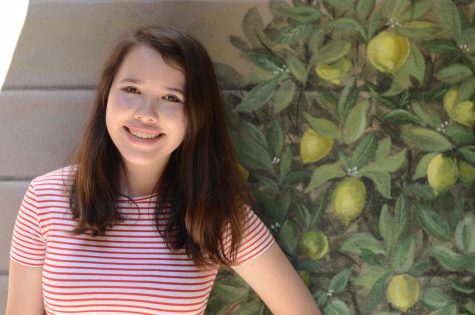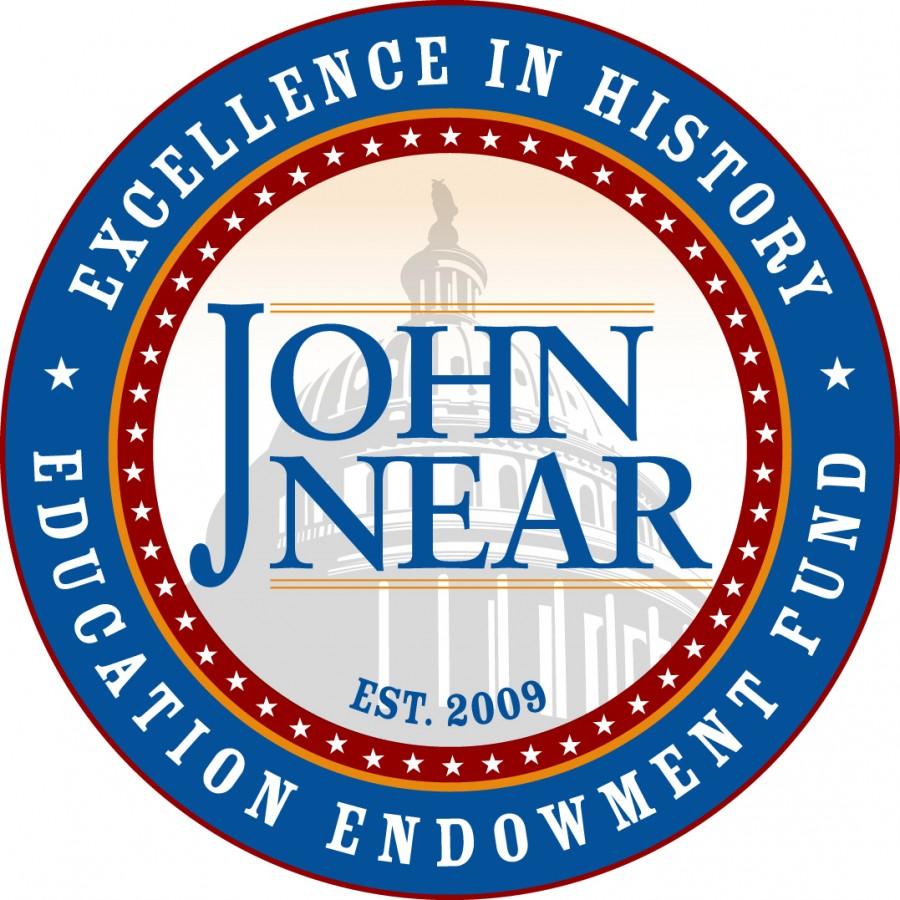Rising senior students submit prospective proposals for historical research
The library and history department released the list of next year’s Near and Mitra scholars on Friday.
The committee reviewed research proposals from 24 applicants and choose the top nine for the research grants. The selected Near scholars are Jasmine Liu (11), Sadhika Malladi (11), Zarek Drozda (11), Shannon Hong (11) and Sahana Narayanan (11), while Kaitlyn Gee (11), Elizabeth Siegel (11), Natalie Simonian (11) and Kavya Ramakrishnan (11) are next year’s Mitra scholars.
Librarians and a select number of humanities teachers met to selected next year’s Near and Mitra Scholars last week.
“It’s a very difficult process because we can’t take everybody,” said Susan Smith, Upper School Library Director and co-director of the Near/Mitra program, along with Donna Gilbert, history department chair. “I think there are many people in the room who would love to just take everybody, but we don’t have the resources to do that so it becomes a question of really looking at the applications closely – how compelling the questions are, how well thought out we think they have been.”
The Near and Mitra scholarships are both managed by the History department and supported by the library. The Near grant was founded by John Near in 2009 and focuses on American History, while the Mitra grant, founded by the Mitra family, allows students to research general humanities and world history.
“I think it helps if you have had experience and pleasure doing research projects before, ” said Smith. “If you have enjoyed doing your assigned research before, and you just like research, deep research, digging, and bringing an open mind to it.”
Despite being more work on top of the regular curriculum, the students look forward to the fact that they will be able to work on their research.
I think the great thing is the opportunity to pursue something that I’m really interested in in a long-term kind of basis instead of the traditional research project of a few weeks,” said Sahana Narayanan (11). “Just the amazing access to so many different kinds of resources is great.”
Even though students may be passionate about their proposals, Smith notes that the students are meant to go into their research with an open mind. “There are some topics that students think they know about because of another experience they’ve had, and really they just want to write a position paper on something that you feel strongly about,” she said. “That isn’t really what this program is about. It’s about doing authentic research, really looking at all sides of an issue, and sometimes that’s hard.”
The application period spanned from April 1 to May 1. Rising seniors submitted a 50-word research question proposal, a short essay on why they wanted the opportunity, the name of a teacher who would recommend them and their extracurricular commitments in the coming year.
For some applicants, the Near/Mitra grant is an opportunity to explore a longtime area of interest. According to Smith, the applications are not usually the first time that the students in question has interacted with the sources with which they want to pursue research.
“There’s a personal connection for some kids,” she said. “Some kids talk about having done research on this topic independently on this topic for many years before this opportunity.”
Natalie Simonian (11) proposed a paper for the Mitra scholarship about Marie Antoinette and Alexandra Feodorovna after noticing similarities between the two during AP Euro in sophomore year.
“What I’m going to be looking at is how the public perception of both women may have exacerbated their distaste and hatred towards the royal family because both of them were kind of incompetent and really sort of alienated from the public, and then discussing how that may have contributed to the french and Russian revolutions,” Simonian said. “The second part of what I intend to do is reevaluating those views within the actual historical context, what those women actually were experiencing and why they may have acted the way they did.”
Simonian was especially interested in the topic because of its connection to her Russian heritage. “My parents are from the USSR, so I’ve been sort of brought up in the Russian cultural history, and I’ve been interested in the Romanov family since I was like five or six,” she said.
Although less than half of the applicants received a grant, Smith emphasizes that not being chosen is not a barrier to research. “We’ve also had kids in past years who haven’t gotten one of the endowments, but have gone ahead and done the research anyway because they’re just that interested in it, so it takes all forms.”
This piece was originally published in the pages of The Winged Post on May 13, 2015.

Meilan Steimle (12) is co-Editor-in-Chief of the Winged Post. She was a reporter her freshman year, Winged Post Opinion Editor her sophomore year and Winged...


















![“[Building nerf blasters] became this outlet of creativity for me that hasn't been matched by anything else. The process [of] making a build complete to your desire is such a painstakingly difficult process, but I've had to learn from [the skills needed from] soldering to proper painting. There's so many different options for everything, if you think about it, it exists. The best part is [that] if it doesn't exist, you can build it yourself," Ishaan Parate said.](https://harkeraquila.com/wp-content/uploads/2022/08/DSC_8149-900x604.jpg)




![“When I came into high school, I was ready to be a follower. But DECA was a game changer for me. It helped me overcome my fear of public speaking, and it's played such a major role in who I've become today. To be able to successfully lead a chapter of 150 students, an officer team and be one of the upperclassmen I once really admired is something I'm [really] proud of,” Anvitha Tummala ('21) said.](https://harkeraquila.com/wp-content/uploads/2021/07/Screen-Shot-2021-07-25-at-9.50.05-AM-900x594.png)







![“I think getting up in the morning and having a sense of purpose [is exciting]. I think without a certain amount of drive, life is kind of obsolete and mundane, and I think having that every single day is what makes each day unique and kind of makes life exciting,” Neymika Jain (12) said.](https://harkeraquila.com/wp-content/uploads/2017/06/Screen-Shot-2017-06-03-at-4.54.16-PM.png)








![“My slogan is ‘slow feet, don’t eat, and I’m hungry.’ You need to run fast to get where you are–you aren't going to get those championships if you aren't fast,” Angel Cervantes (12) said. “I want to do well in school on my tests and in track and win championships for my team. I live by that, [and] I can do that anywhere: in the classroom or on the field.”](https://harkeraquila.com/wp-content/uploads/2018/06/DSC5146-900x601.jpg)
![“[Volleyball has] taught me how to fall correctly, and another thing it taught is that you don’t have to be the best at something to be good at it. If you just hit the ball in a smart way, then it still scores points and you’re good at it. You could be a background player and still make a much bigger impact on the team than you would think,” Anya Gert (’20) said.](https://harkeraquila.com/wp-content/uploads/2020/06/AnnaGert_JinTuan_HoHPhotoEdited-600x900.jpeg)

![“I'm not nearly there yet, but [my confidence has] definitely been getting better since I was pretty shy and timid coming into Harker my freshman year. I know that there's a lot of people that are really confident in what they do, and I really admire them. Everyone's so driven and that has really pushed me to kind of try to find my own place in high school and be more confident,” Alyssa Huang (’20) said.](https://harkeraquila.com/wp-content/uploads/2020/06/AlyssaHuang_EmilyChen_HoHPhoto-900x749.jpeg)



